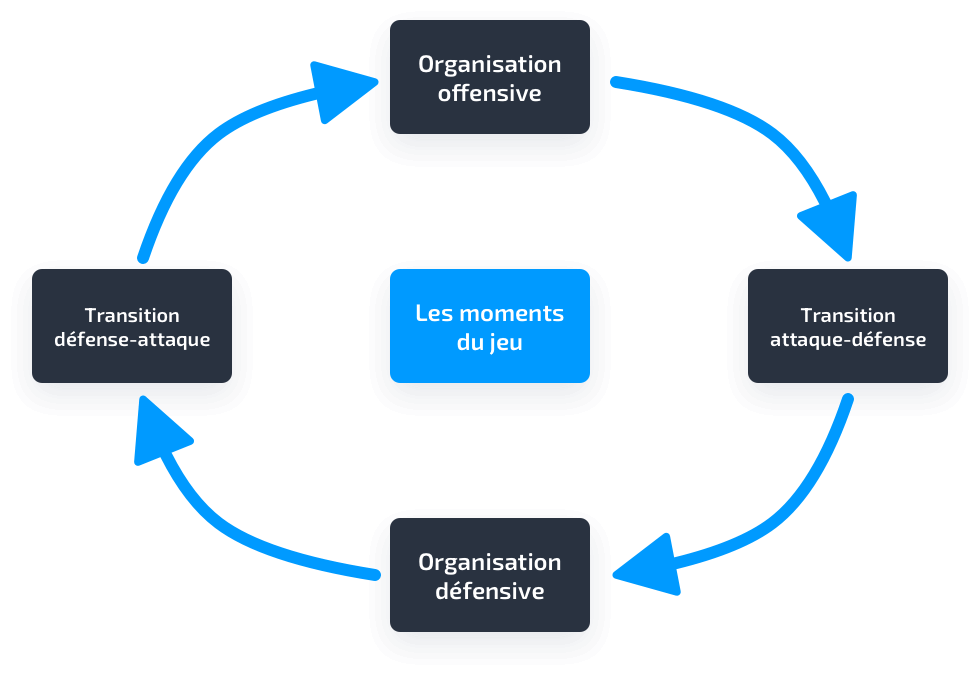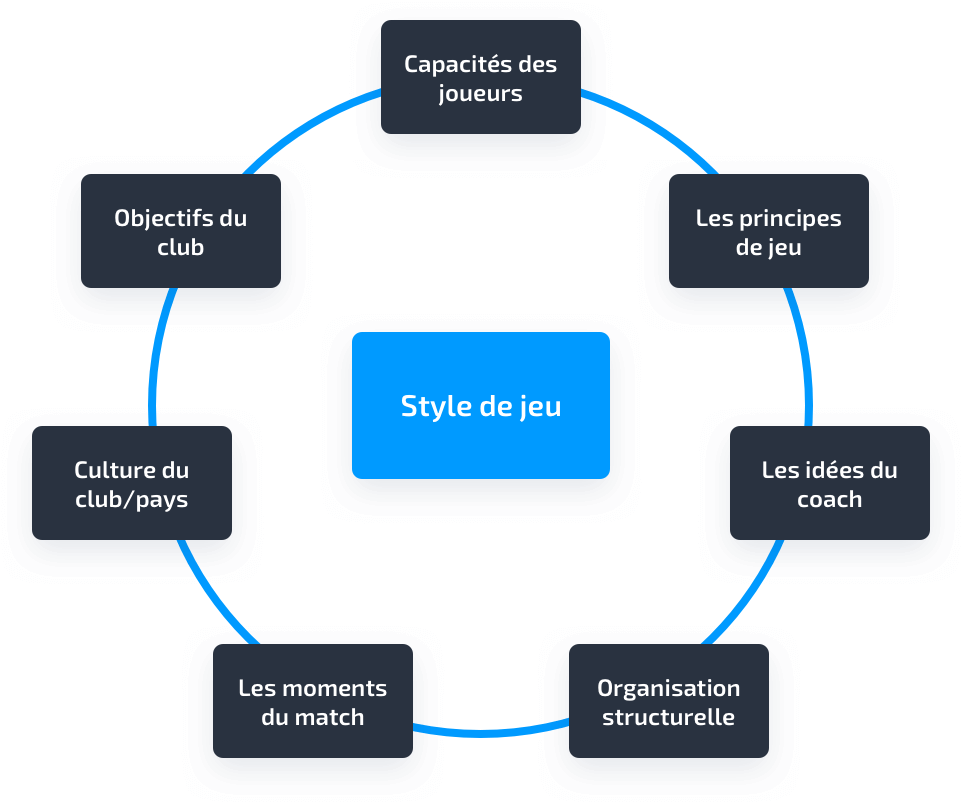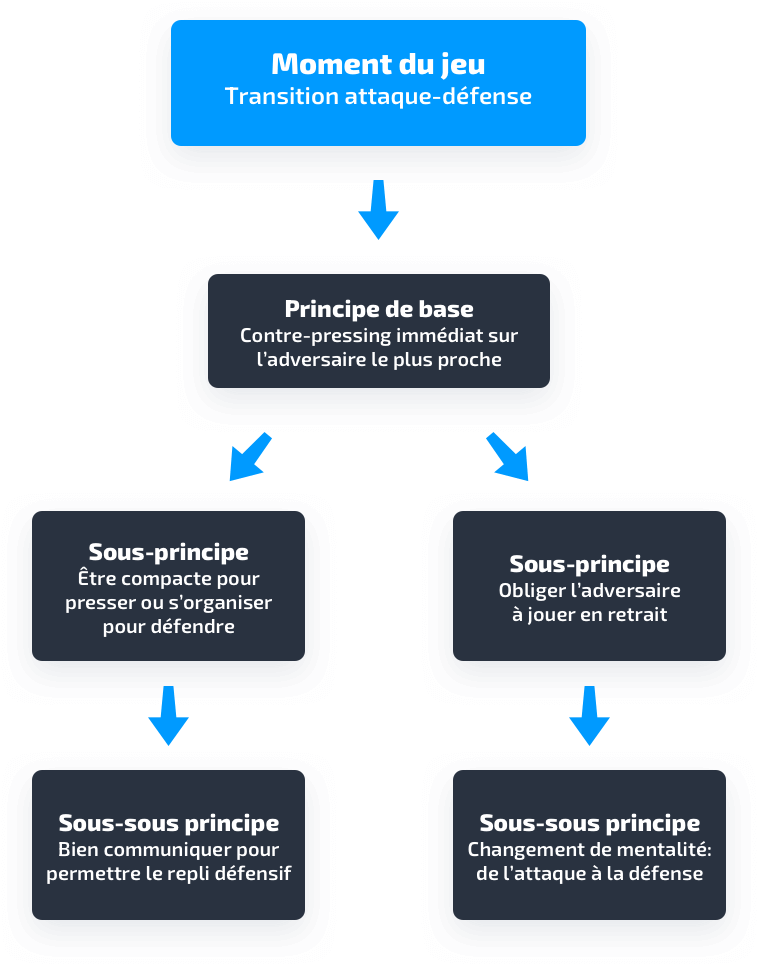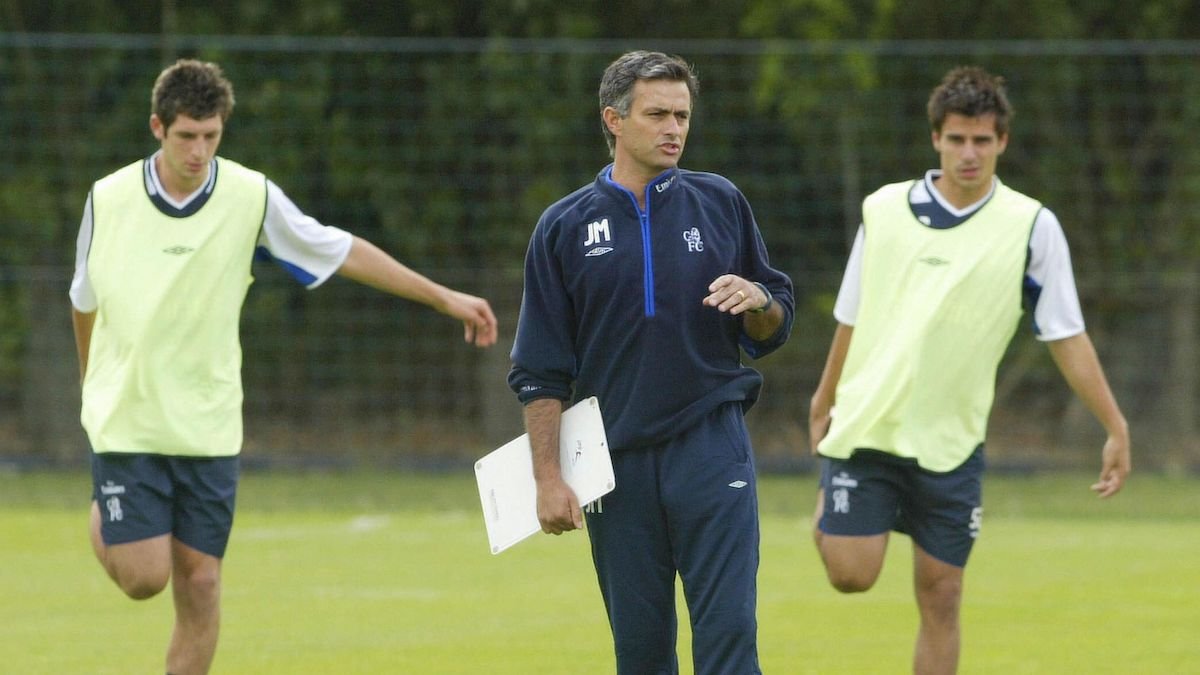Table of Contents
One of the most contemporary training approaches in football is something called “tactical periodization.” Here is a complete guide to fully understand its issues and know how to use it.
Over the past few years, we have seen a shift in football training concepts and methodologies. Probably the biggest break from traditional training methods took place in Portugal and Spain. One of the most contemporary training approaches in football is something called “tactical periodization.”
What is tactical periodization?
The tactical periodization method was developed by Vitór Frade, professor at the Sports University of Porto (Portugal), and it is applied by Jose Mourinho and Andre Vilas Boas, among others. Explained in a simplified way, the basic methodological and pedagogical principle behind tactical periodization is that football must be “trained/learned” respecting its logical structure. For tactical periodization, the “logical structure” of the game revolves around the four moments of the game: defensive organization, defense-attack transition, offensive organization and attack-defense transition.
 The 4 “moments” of the game
The 4 “moments” of the game
Consequently, at least one of these four moments of the game is always present in each training exercise following the so-called principle of specificity.
“We can differentiate between traditional analytical training where the different factors are trained independently, integrated training, which uses the ball but where the fundamental concerns are not very different from the traditional; and there is my way of training, which is called tactical periodization. This has nothing to do with the previous two, although many people think so. »
Mourinho, 2006
What are the methodological principles of tactical periodization?
The style of play
The style of play in football reflects all the interactions between your players, as well as the way they make decisions. This decision-making should not be random, but it should be based on certain principles that follow an internal logic. While building the team’s playing model, coaches must consider several factors that operate in a given specific context, where each factor is just as important as the next. This is what it looks like:
 The style of play
The style of play
“For me, the most important aspect in my teams is to have a defined playing model, a set of principles that provide organization. That is why, from day one, our attention has been directed towards this goal”
Mourinho, 2006
The idea of play that the coach has in mind is obviously a key aspect of constructing the playing model (or playing style). It is imperative that players know exactly what they need to do at each moment of the game. Thus, the model consists of principles, sub-principles and sub-sub-principles of play that represent different moments of the match.
It is important to understand that defining and creating a relevant and clear game model should not be seen as something that will force players to act like “robots” following a predefined plan. On the contrary, the main goal of a clear playstyle is to reduce players’ uncertainty, which should give them more time to use their creativity.
Principle of specificity
This first principle is the most important of tactical periodization. Specificity occurs when there is a permanent relationship between all dimensions of the game and the training exercises are specifically representative of the game model (playing style). The concept of specificity guides and directs the training process. In this regard, Vitor Frade affirms that whatever the characteristics of the training exercises (for example, with more or fewer players, more or less large spaces), they should always be articulated in a way that allows our principles of play to be approached, to then be learned and used in competition.
“For me, training means training in a specific way. That is to say, creating exercises that allow me to highlight my playing principles.”
Mourinho, 2006
But each exercise is just “potentially specific”. Compliance with the principle of specificity will only be achieved if, during training, players understand the goals and objectives of the exercise, and maintain high levels of concentration. Therefore, your intervention is essential and must be appropriate.
Make the tactical principles of the game operational
A team tends to be attracted to dynamic behavior that represents its identity and describes a pattern of action. To make these theoretical aspects concrete, each training exercise must conform to the style of play (playing model) and the concept of specificity. These references must be present in daily work, in order to provide specific adaptations and tactical knowledge.
If the proposed exercise is designed without taking into account the playing style, the adaptations promoted may have negative effects and harm the acquisition of the desired knowledge. It is crucial that the drills reflect the way we want to play and the randomness and unpredictability of a match. This implies that each of the proposed exercises must lead to something that the players do not control. Since football is non-linear, training drills, even if simpler, should be non-linear.
“One of the most difficult challenges is to make our playing style operational by creating exercises where we can bring together all aspects, without ever forgetting our first concern: to enhance a given principle of our playing model.” Mourinho,
2006
The intervention of the coach plays a key role in the conduct of the exercise, and it is also important to note that the structural and functional configuration of the exercises is crucial to conform to the specificity of the game. This means that certain exercises , due to their structure, favor functionality (e.g., acquiring behaviors without even realizing it).
Hierarchical organization of game principles
Game principles are complex concepts because they involve several interrelated variables. This is why tactical periodization breaks them down to reduce their complexity. Thus, the game principles are subdivided into sub-principles, and they themselves are further fragmented into sub-sub-principles. The goal is to make them more understandable for players. This process of breaking down the playing principles must be done carefully, respecting the style of play (playing model) put in place.

Hierarchical organization: example
Each specific principle of the game model is directly linked to one of the four moments of the game. Not all game principles have the same value, which is why there is a hierarchical organization. Some principles are more important and valued than others in terms of what is intended.
“I wrote a document that will never be published. This is my training folder, where I keep all my instructions specific to my training. In other words, all my training objectives and how to achieve them thanks to my methodological principles and the exercises put in place. If I had to name this document, its title would be: “The Evolution of My Training Concepts.”
Mourinho, 2007
A coach’s ability to articulate all of the principles that are consistent with a model of play will help determine the DNA of the team, and therefore the coach’s design of the game.
The concepts of “tactical fatigue” and “tactical concentration”
Football players’ performances require constant tactical thinking, both in the game and in training. Players need to concentrate and developing a tactical attitude involves developing an attitude to think and decide quickly. Mastery of specific techniques and tactical decision-making ability depend on their suitability for the game situation.
This means that high levels of concentration from the first to the last minute of the game are essential. Therefore, intensity is not an intangible concept; it is directly linked to the principles and sub-principles of the game which, when trained through well-designed exercises, will guide a player’s future actions and thoughts. The more variables there are for players to analyze when performing training drills, the more demanding and intense the situation will be.
“Concentration is learned. This can be done through training according to a specific philosophy. I can’t separate training intensity from the concept of concentration. When I say that football is done through high intensity actions, I also refer to the need for permanent concentration: it is implicit in the game.”
Mourinho, 2006
The intensity will be different from day to day as the complexity of the workouts varies. We can illustrate the concept of relative maximum intensity with this example: a team played on Sunday, so the player on Monday and Tuesday is not fully recovered physically, mentally or emotionally. To be able to overcome all the challenges that Tuesday training may require, the player must work at maximum concentration intensity.
This maximum intensity, however, will not be enough to overcome the increasing complexity (and intensity) that the training tasks will require on Wednesday and Thursday. Therefore, from tactical periodization, the intensity is always maximum in terms of concentration, but relative to the recovery and preparation of players to train.
The higher the concentration level of players during training, the less likely they will be to make mistakes. High concentration provides a higher degree of learning, which is why coaches should always strive for maximum concentration in training.
